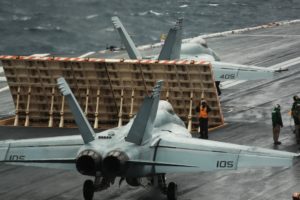
The top two members of a House Armed Services Committee (HASC) subcommittee this week said the Navy’s strike fighter shortfall is back to running through 2031, after previous years the service claimed the shortfall would end in 2030 and then 2025. “Two years ago, the Navy’s strike-fighter shortfall would have lasted until 2030. However, last year the Navy told us that their strike fighter shortfall would be resolved to zero in 2025, primarily to have solid justification for terminating the…

 By
By 











